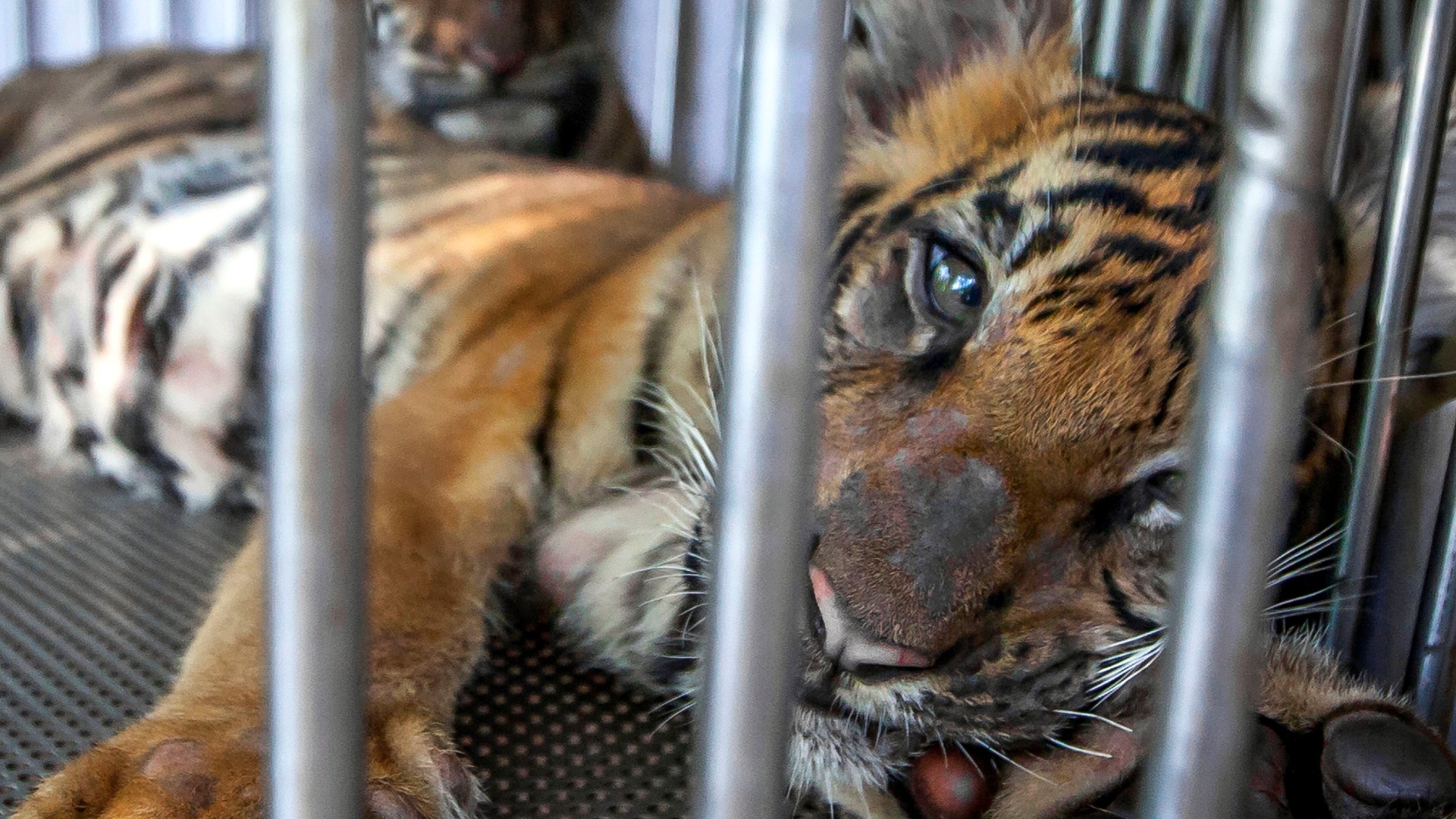
Tiger Farming
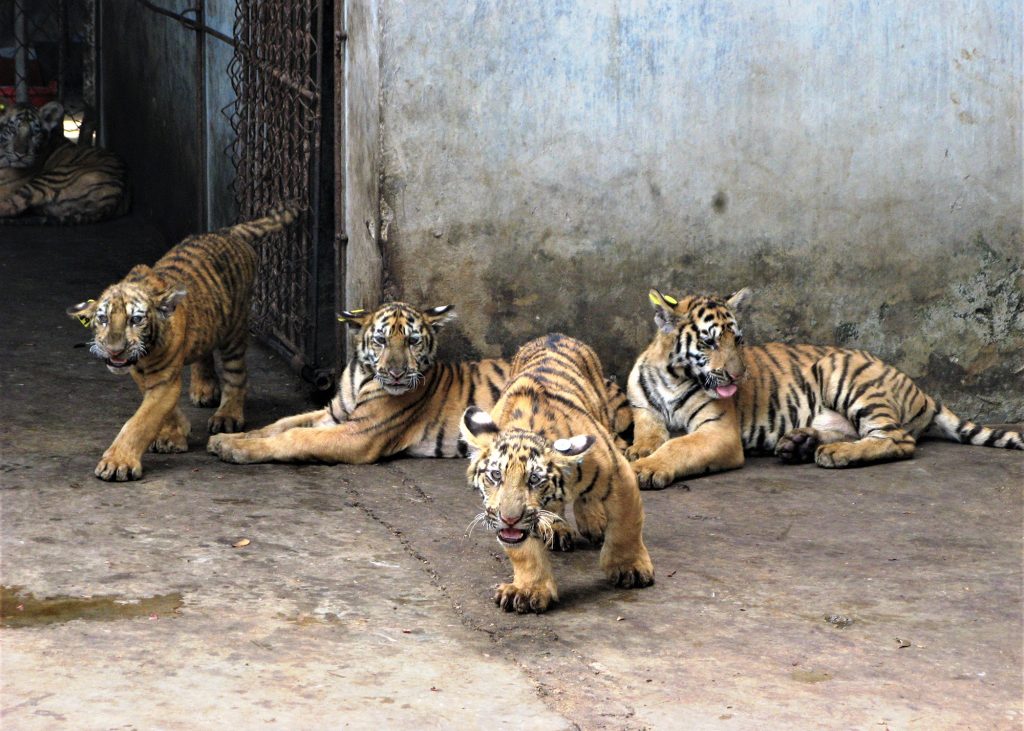
Born Free is wholly opposed to ‘tiger farming’, the large-scale captive breeding of tigers for commercial gain, believing it causes great suffering and leads to poaching and trafficking of wild tigers, thus undermining critical conservation efforts.
What is Tiger Farming?
Tigers are bred and kept, often in appalling conditions, on ‘tiger farms’ and other facilities in order to supply and stimulate the trade which feeds the demand. Tiger farms can house hundreds of tigers in row upon row of barren and cramped enclosures. Many of these facilities have been implicated in illegal trade, as have smaller facilities linked to the trafficking of tigers.
Tiger farms often supply facilities that offer visitors the opportunity to pet and cuddle them, and have their picture taken alongside them. Skins are professionally taxidermied and turned into rugs for luxury home décor; skeletons are soaked in vats of wine to make tiger bone ‘health tonic’; teeth, claws and other body parts are also in demand. Healthy markets for these items are found in China, Indonesia, Lao PDR, Myanmar and Vietnam, and they are openly sold in a number of locations in these countries.
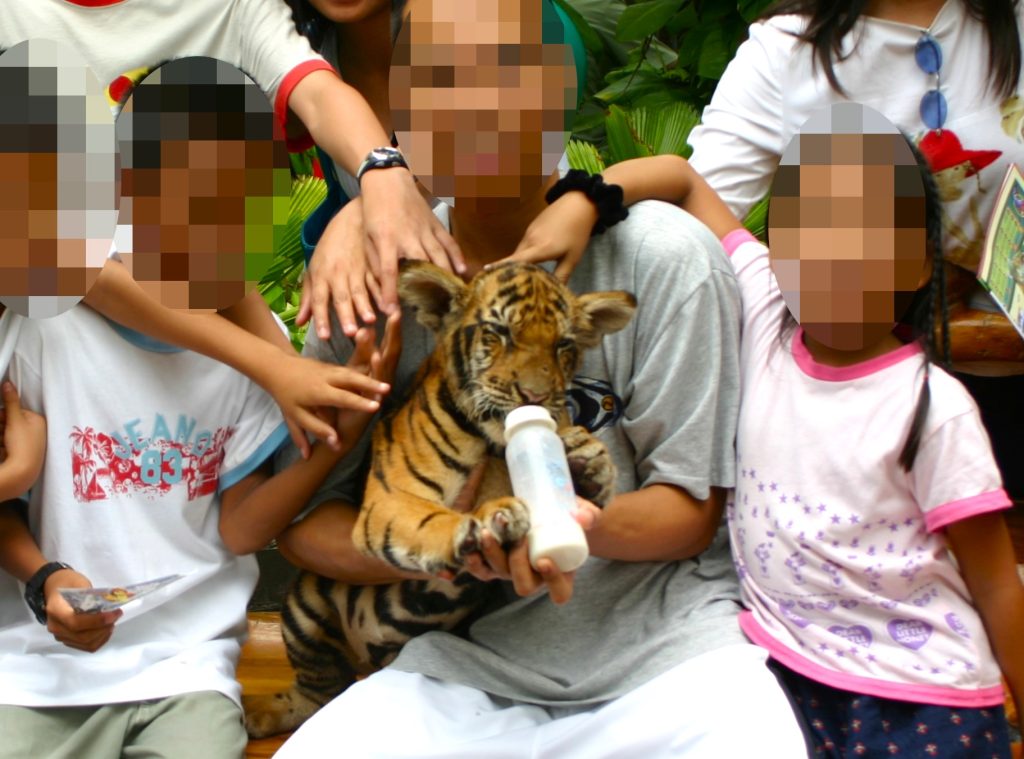
You can help end the demand for tourist facilities offering tiger encounters, by signing our ‘Stop Selfish Selfies’ pledge.
Is tiger farming and tiger trade illegal?
A total ban on the international trade in tiger parts and products was put in place in 1975, but tigers from captive sources, as well as wild tigers, are routinely identified in illegal cross-border trade. In 2007, all countries concerned agreed to not breed tigers for commercial trade, and yet the tiger farming industry has now developed to such a point that the number of captive tigers in such facilities vastly outnumbers that of their wild counterparts. While the world has around 4,000 wild tigers, just four countries – China, Thailand, Vietnam and Lao PDR – have more than 8,000 captive tigers. Considerable numbers of tigers are also bred in South Africa, which has no wild tigers, for export to Asia. In recent years it has come to light that even certain European countries are also sources of captive bred tigers for their illegal trade.
Tiger farms not only present serious welfare problems but they are also a serious additional obstacle to wild tiger conservation. Their existence increases demand for wild tiger parts and products, which in turn actively stimulates the demand for their more ‘potent’ and often cheaper counterparts from the wild. As with Asiatic bears, and other farmed threatened animals, the creation of a captive industry to supply a market has failed to alleviate poaching pressure on wild tigers. On the contrary, it has only further encouraged the development of a market which often perceives the wild counterpart as more powerful, virile or more desirable.
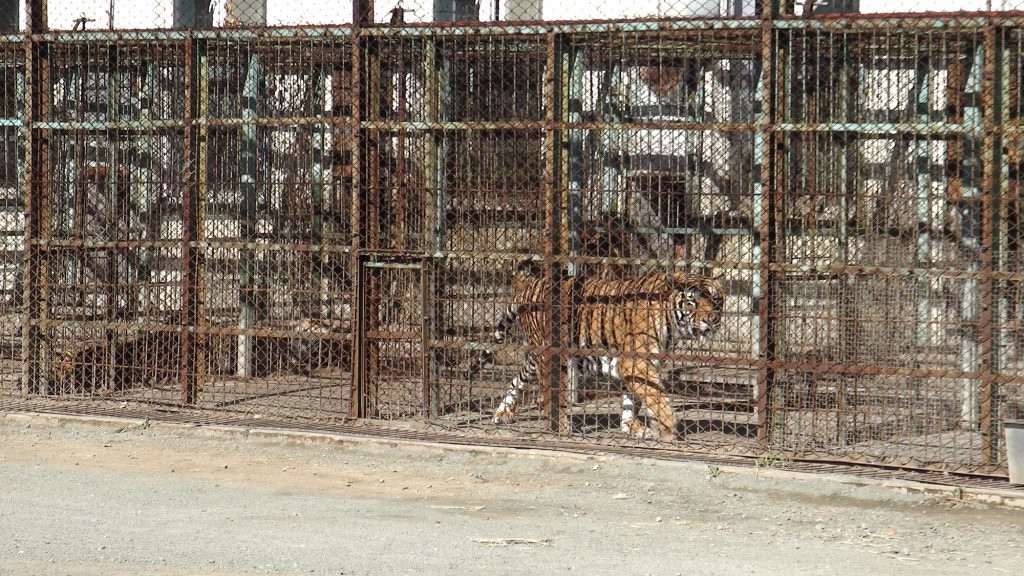
Tiger Farm © Animals Asia Foundation
An industry that thrives on encouraging demand for gruesome potions, decorations and amulets is the last thing wild tigers need. Tiger poaching, conflict with people over shared resources, degraded habitat from large scale developments, loss of prey due to poaching have led to a situation where 60% of the world’s wild tigers persist in just one country, India. It means India, as the largest source of wild tigers to the nearest source of demand, China, faces an acute and ongoing poaching threat.
Officially, a handful of wild tigers remain in China, but they have been declared ‘functionally extinct’ in Cambodia, Vietnam and Laos. Population levels in Malaysia, Indonesia and Myanmar are of significant concern.
Many countries with wild tiger populations are devoting considerable resources to addressing falling tiger numbers, or to increase their populations, but all these efforts will continue to be undermined, and wild tigers will continue to be threatened, so long as tiger faming exists.
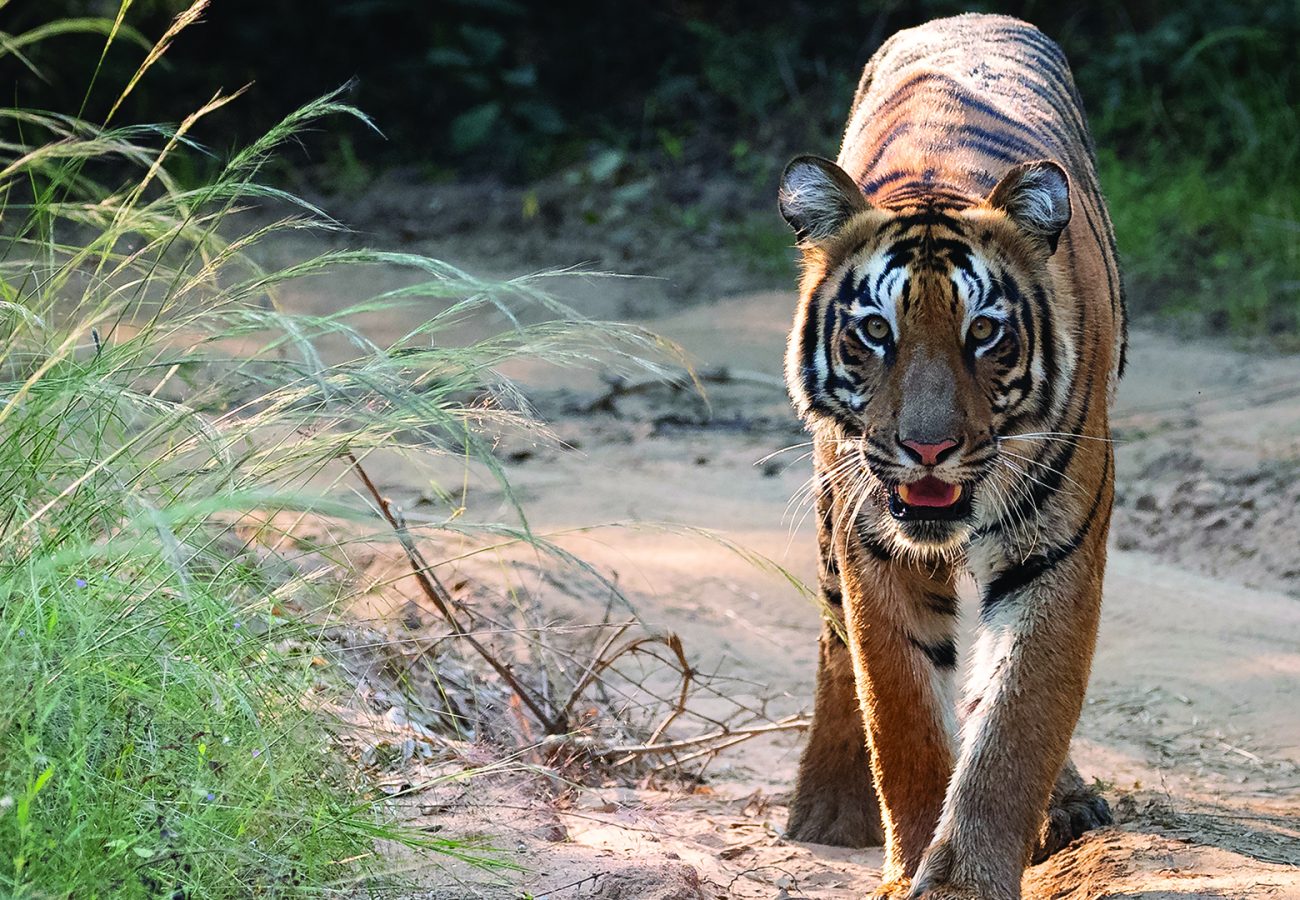
Help Us End Tiger Farming
Sign our petition today to call on all countries to improve enforcement of the ban on the illegal international tiger trade.
